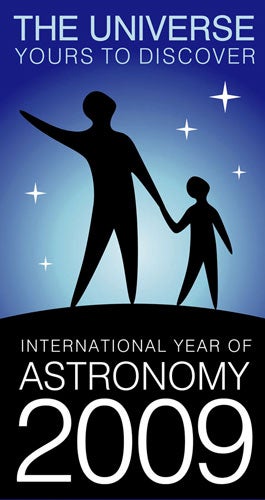I like the comment Astronomy Senior Editor Michael Bakich made when I asked him about the magazine’s plans for IYA2009. “At Astronomy,” he replied enthusiastically, “every year is the Year of Astronomy!” I agree with that approach.
When I put together this column each month, I try to inject a little “wonder and discovery” into my writing. That being said, I was aware that the quadricentennial of Galileo’s pioneering exploits would soon be upon us, and I might want to celebrate the occasion in some of my “Observing Basics” articles. IYA2009 fits my plans perfectly! This month and throughout the year, I’ll focus on IYA2009 activities and the heavenly marvels Galileo explored 4 centuries ago.
And what better way to commence a celebration of Galileo’s astronomical achievements than to repeat his observations of Venus. Through his telescope, Galileo found that Venus goes through a cycle of Moon-like phases, starting out as a small circular disk when it first appears in the evening sky, low in the west after sunset. In the months that follow, as Venus climbs higher above the horizon, its disk grows larger while transforming into a “half-Moon” shape — the phase Galileo observed when the planet arrived at greatest elongation from the Sun.
As Venus descends back into the Sun’s glare, its disk looms larger yet and takes on the appearance of a thin crescent Moon. These phases reverse order when Venus reappears in the morning sky.
Galileo’s bold assertion that the venusian phases he had documented could happen only if Venus were circling the Sun, not Earth, shook the very foundation of 17th-century scientific, philosophical, and religious thought (and ultimately landed Galileo in trouble with the Roman Catholic Church, which at the time promoted an Earth-centered model of the universe).
It’s fitting that as IYA2009 begins, Venus shines brightly in the evening sky — a beacon that attracts our attention as it did Galileo’s centuries ago. In fact, on New Year’s Eve 2008, Venus pairs up with a crescent Moon to form a striking after-sunset sight in our western sky — a heavenly way to sign off 2008. Greatest elongation occurs January 14, after which Venus drops rapidly toward the western horizon. By mid-March, you’ll have a hard time ferreting Venus out of the glare of the setting Sun.
To document Venus’ changing phases, make a weekly telescopic observation. You won’t need high power — a magnification of 50x to 100x will suffice.
Don’t expect to see much in the way of planetary detail. Venus may mimic our Moon’s phases, but that’s pretty much where the similarity ends. Our airless Moon presents us with spectacular cratered terrain, making it a favorite for backyard astronomers. Venus, by contrast, is veiled by a dense cloud-laden atmosphere. The sunlit portion of Venus you see will appear white and featureless.
IYA2009 provides a wonderful opportunity for us to connect with the night sky. If you’re a novice skygazer, you can immerse yourself in backyard astronomy by following in Galileo’s footsteps and repeating his historical observations (don’t worry — I’ll be here to help you). Veteran amateur astronomers who engage in public outreach programs will have a chance to relive those simple cosmic adventures that hooked them on astronomy. To get more information about IYA2009, log on to www.astronomy2009.org
Next month: We retrace Galileo’s telescopic study of Orion. Clear skies!
Glenn Chaple’s 2009 astronomy resolutions.
December 2008: X-rated astronomy
See an archive of Glenn Chaple’s observing basics











